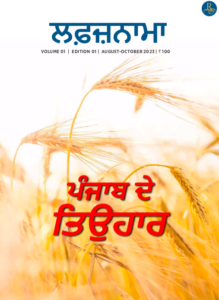WAKE UP TO THE FRAGRANCES AROUND YOU…

‘Nothing brings to life again a forgotten memory like a fragrance.’ (Christopher Poindexter)
An oft-repeated case of subjective opinion relates to the olfactory experience between an Englishman and a French. While the two were out in the midst of nature, the Englishman closed his eyes, drew a whiff and said, “Spring in the air!”
Trust the Frenchman, who shrugged his shoulders nonchalantly and retorted, “Why should I?”
While I was in the second trimester of my first pregnancy, my olfactory powers had heightened to almost incredible levels. One sunny afternoon, my husband and I decided to go for a little soiree to the Sector 17 Plaza and that was when it hit me like a thunderbolt. The irresistible aroma of methi aaloo! Like a maniac, I looked around for the source of the wafting fumes but was unable to find any. The urgency to indulge in my cravings reached such dizzying heights that I insisted upon my husband to drive me home as soon as possible. Once home, I requested my mother to prepare the dish so that I could not eat but devour it. What seems like a joke now was at that time a matter of life and death.
These days, the matter of life and death instantly reminds one of the Covid times and on a lighter note it takes us back once again to all matters olfactory. Most of us who suffered the onslaught of the virus can still relate to the situation when our humble noses refused to acknowledge even the strongest smells which otherwise had the capacity to suffocate us. A colleague who suffered from low grade fever and yet was unsure whether it was Covid or not, was busy peeling garlic in the kitchen when she realized that she could not detect the pungent odour of the same. She sniffed her fingers and still failing to perceive the smell, discredited the poor garlic of inferior quality.
Erica Bauermeister in one of her blog posts ‘Scent and Sensibility’ writes,
‘Scents are the stealth weapons in the arsenal of the senses. They head directly to the emotional parts of the brain, bypassing rationality. The memories they evoke are rich, immersive things, three-dimensional and intimate.’
Authors have a knack of playing with the imaginative power of their readers. They tend to use graphic and descriptive details for enhanced visual imagery. Images like how the place/setting looked like, how the characters were dressed and how the objects were placed in a room allow the reader a better insight into the fictional word projected by the author. However, it is the olfactory imagery that immediately connects the reader to a memory or more specifically the ‘memory of a smell’. Scientists believe that smell or even the memory of a smell helps release oxytocin which “instills trust, increases loyalty, and promotes the ‘tend and befriend’ response.” (Kenneth Cloke, Ph.D.)
Readers have often been enchanted by writers and poets through passages and verses winding around olfactory imagery. Phrases like– the smell of the old books; down the dusty corridor with musty walls; words like– citrusy, coppery, minty, earthy, fruity, lemony, peachy, musky, smokey and woody fragrance; also the aroma of freshly roasted coffee beans, fresh baked bread, ground cinnamon and other spices conjure up images and memories cherished by one and all. In the words of Hellen Keller,
‘Smell is a potent wizard that transports you across thousands of miles and all the years you have lived.’















